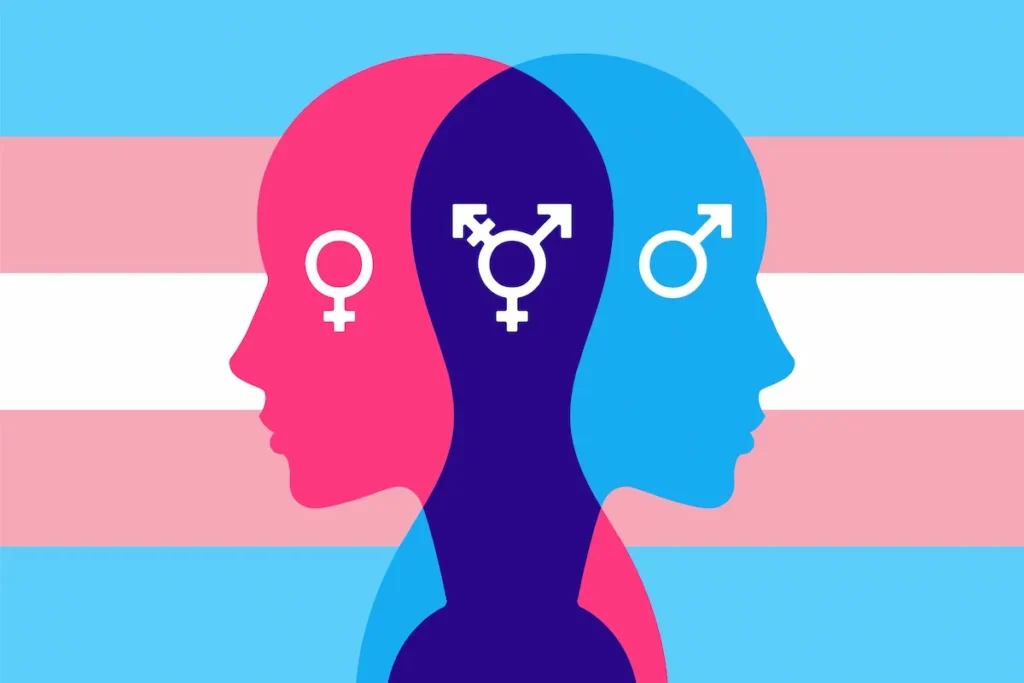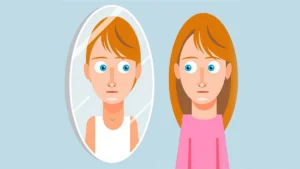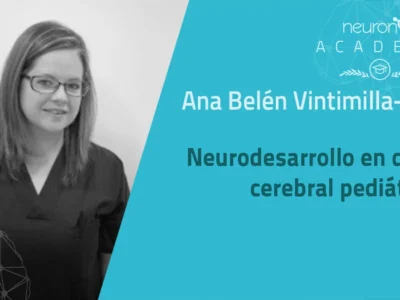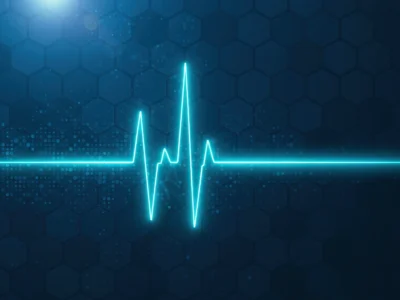Do you know what gender dysphoria is? And the causes, treatments and psychosocial consequences that these people experience? Neuropsychologist Daniela Ramos explains it to you in this article.
Difference between sex and gender
A transgender person is someone who feels a dissonance between biological sex and their gender identity. On many occasions, the concepts of sex and gender are used interchangeably and improperly, which can lead to confusion when dealing with topics like this one. Therefore, it is necessary, in the first instance, to clarify the meaning and differences of each term1.
- Sex: the biological and physiological characteristics that define a person as male or female. Sex includes hormones, genital organs, sex chromosomes and genetics, and is assigned at birth taking these factors into account.
- Gender: socially constructed characteristics that define a person’s role in society, and categorize them as man or woman. Gender includes identity, behavior and beliefs, and determines how people should interact with others of the same or opposite sex within homes, communities and workplaces.
What is gender dysphoria?
With these two concepts clear, gender dysphoria (GD) can be understood as the psychiatric diagnosis characterized by significant psychological distress due to a dissonance between biological sex, assigned at birth, and gender identity. This dissonance usually appears at an early age, so that children with GD show behaviors and preferences that do not correspond to their biological sex2.
Criteria for the diagnosis of gender dysphoria
Criteria for the diagnosis of gender dysphoria in children
According to the Diagnostic and Statistical Manual of Mental Disorders, Fifth Edition (DSM-5)3, the criteria for the diagnosis of gender dysphoria in children are as follows:
- A marked incongruence between the sex one feels or expresses and the one assigned, of a minimum duration of six months, manifested by a minimum of six of the following characteristics (one of which must be Criterion A1):
- A strong desire to be of the other sex or an insistence that he or she is of the opposite sex (or of an alternative sex different from the one assigned).
- In boys (assigned sex), a strong preference for cross-dressing or for imitating female clothing; in girls (assigned sex) a strong preference for wearing only typically male clothes and a strong resistance to wearing typically female clothes.
- Marked and persistent preferences for the role of the other sex or fantasies about belonging to the other sex.
- A marked preference for toys, games or activities usually used or practiced by the opposite sex.
- A marked preference for playmates of the opposite sex.
- In boys (assigned sex), a strong rejection of typically male toys, games and activities, as well as a marked avoidance of rough-and-tumble play; in girls (assigned sex), a strong rejection of typically female toys, games and activities.
- A marked dislike of one’s own sexual anatomy.
- A strong desire to have the primary and secondary sexual characteristics corresponding to the sex one feels.
- The problem is associated with clinically significant distress or impairment in social, school or other important areas of functioning.
Criteria for the diagnosis of gender dysphoria in adolescents and adults
In the case of adolescents, the criteria are the same as for adults:
- A marked incongruence between the sex one feels or expresses and the one assigned, of a minimum duration of six months, manifested by a minimum of two of the following characteristics:
- A marked incongruence between the sex one feels or expresses and one’s primary or secondary sexual characteristics (or in early adolescents, the anticipated secondary sexual characteristics).
- A strong desire to get rid of one’s own primary or secondary sexual characteristics because of a marked incongruence with the sex one feels or expresses (or in early adolescents, a desire to prevent the anticipated development of secondary sexual characteristics).
- A strong desire to possess the primary and secondary sexual characteristics corresponding to the opposite sex.
- A strong desire to be of the other sex (or of an alternative sex different from the one assigned).
- A strong desire to be treated as the other sex (or of an alternative sex different from the one assigned).
- A strong conviction that one has the typical feelings and reactions of the other sex (or of an alternative sex different from the one assigned).
- The problem is associated with clinically significant distress or impairment in social, occupational or other important areas of functioning.
Causes of gender dysphoria
Hormonal factors
Although efforts have been made to determine the causes of gender dysphoria, research results are not conclusive. Among the hypotheses proposed, hormonal factors have been highlighted as a possible explanation, so that atypical production of sex hormones during the prenatal stage leads to changes in the activation of brain circuits during puberty that explain the incongruence experienced by this population4.
In relation to the above, various studies in adults have shown that there is a particular activation pattern in transgender people that differs from that of men and women5-7. These findings have been explored in children in the study by Nota and colleagues8, where adolescents, but not children, showed patterns of functional connectivity (FC) similar to their experienced gender and not to their sex. It should be noted that more studies are needed in this line of research to consolidate this hypothesis.
Genetic factor
On the other hand, it has been found that monozygotic twin siblings are more likely to both have GD than dizygotic siblings. This suggests that there is a genetic factor that appears to play a relevant role in the development of GD; however, there is still not enough evidence on this matter9.
Psychosocial and environmental perspective
Finally, attempts have been made to provide an explanation from a psychosocial and environmental perspective, arguing that GD develops in situations where there is an anxious tendency on the part of children combined with a psychopathological profile of the parents, accompanied by other biological factors such as a feminine aspect in boys or a masculine aspect in girls10.
Nonconformity with the binary system
Likewise, it has been hypothesized that children with GD actually present a nonconformity with the binary system (man/woman) imposed in most societies11. However, as with the previous cases, the veracity of these explanations is not clear.
Psychosocial consequences
Emotional problems
What is clear is that this situation can be truly adverse for minors and trigger a series of emotional and social problems that compromise their quality of life.
However, it should be clarified that the psychological suffering associated with the dissonance between sex and gender that these children experience is different and independent from the emotional problems derived from the social rejection that both the children and their families commonly suffer.
In most cases, these minors are misunderstood by others and treated as “weird” for not being congruent with what is socially accepted.
School response
In the school environment, rejection by peers and even teachers leads children and adolescents to associate school with negative experiences and perceive it as an unsafe place for them. This, in turn, results in minors not wanting to go to or not attending school, not paying attention in class or having behavioral problems, which ultimately translates into academic failure.
Family response
In the family environment, there may also be rejection by parents and/or other relatives, who may face the situation with distress or uncertainty and fail to provide the support their children so desperately need.
Institutional response
At the institutional level, these minors also have to deal with daily obstacles that, insignificant as they may seem, cause them suffering. For example, until October 2018, the 2007 gender identity law prohibited the registry change of name and sex for minors. It was not until then that a bill was drafted so that minors could request a change of the name in the registry through their parents or legal guardians12.
Anxiety and depression
Together, all these factors promote the development of symptoms of anxiety and depression in children and adolescents, which in the most extreme cases can result in suicide, as was the recent case of Ekai that shocked all of Spain13. In fact, minors who have social support and grow up in an environment of tolerance are less likely to suffer emotional disorders.
In addition, it has been documented that emotional problems decrease considerably when minors begin treatment. Although it is a long process, knowing that they are on the path to becoming who they really want to be brings them relief14.
Treatments
It is a gradual process that consists of the following phases1:
- Social transition: children and adolescents adopt a name and pronouns consistent with their experienced gender, as well as clothing, haircut, etc.
- Puberty suppression: treatment with agonists of the gonadotropin-releasing hormone (GnRH) is started to stop the development of unwanted physical and sexual characteristics, such as facial hair in boys or breast development in girls, among others. This treatment is started in adolescence, between ages 12 and 16.
- Sex reassignment: on the one hand, sex reassignment hormones are administered from age 16, and, on the other hand, when legal adulthood is reached, gender confirmation surgery can be carried out.

Conclusion
Transgender people, especially the youngest, are in a situation of vulnerability due to a lack of knowledge on the part of society about this issue. The consequences, as presented, are diverse and can be fatal; therefore, it is essential to inform and raise awareness among the population in order that these children do not have to pay the price of intolerance toward what is considered different. The well-being and even the lives of these human beings are at stake if an urgent change in the conception of “normality” does not occur.
But how can this be achieved? Although it is not an easy task, we can take small actions that gradually help reach the goal. For example, it is extremely important that schools and families themselves teach children the full range of possibilities regarding identity. To this end, it is also important to offer informative sessions in parent associations, where, in addition to explaining the topic to them, they are taught how to explain it to their children. In relation to this, it would also be appropriate to develop tools, such as stories or films that facilitate children’s understanding.
There is still a long way to go, but thanks to the struggle of many people initiatives are being carried out and small changes are being achieved that have a great impact on the situation of these minors.
References
- Trujillo MA, Tabaac AR, Wall CSJ. Gender dysphoria in children. In Arango-Lasprilla JC, Romero I, Hewitt N, Rodríguez-Irizarry W. Psychological and neuropsychological disorders in childhood. México: Manual Moderno; 2018. 197-212.
- Ristori J, Steensma TD. Gender dysphoria in childhood. Int Rev Psychiatry. 2016;28(1):13-20.
- American Psychiatric Association. (2013). Diagnostic and statistical manual of mental disorders (DSM-5®). American Psychiatric Pub.
- Swaab DF, García-Falgueras A. Sexual differentiation of the human brain in relation to the gender identity and sexual orientation. Funct Neurol. 2009;24(1):17.
- Clemens B, Junger J, Pauly K, Neulen J, Neuschaefer-Rube C, Frölich D. Male-to-female gender dysphoria: Gender-specific differences in resting-state networks. Brain Behav. 2017 Apr 5;7(5):e00691.
- Feusner JD, Lidström A, Moody TD, Dhejne C, Bookheimer SY, Savic I, et al. Intrinsic network connectivity and own body perception in gender dysphoria. Brain Imaging Behav. 2017 Aug;11(4):964-976.
- Kreukels BP, Guillamon A. Neuroimaging studies in people with gender incongruence. Int Rev Psychiatry. 2016;28(1):120-8.
- Nota NM, Kreukels BPC, den Heijer M, Veltman DJ, Cohen-Kettenis PT, Burke SM, Bakker J. Brain functional connectivity patterns in children and adolescents with gender dysphoria: Sex-atypical or not? Psychoneuroendocrinology. 2017 Dec;86:187-195.
- Coolidge FL, Thede LL, Young SE. The heritability of gender identity disorder in a child and adolescent twin sample.Behav Genet. 2002 Jul;32(4):251-7.
- Wallien MS1, van Goozen SH, Cohen-Kettenis PT. Physiological correlates of anxiety in children with gender identity disorder. Eur Child Adolesc Psychiatry. 2007 Aug;16(5):309-15.
- Cruz TM. Assessing access to care for transgender and gender nonconforming people: a consideration of diversity in combating discrimination.Soc Sci Med. 2014 Jun;110:65-73.
- Rader DJ, Hobbs HH. Disorders of lipoprotein metabolism. In: Barnes PJ. Longo DL, Fauci AS, et al, editors. Harrison principles of internal medicine. Vol 2. 18a ed. México: McGraw‐Hill; 2012. p. 3145‐3161.
- Benito E. Justice will make it easier for trans minors to change the name on the registry. El País. 20118. Retrieved from: https://elpais.com/sociedad/2018/10/17/actualidad/1539779587_691507.html
- N. Ekai, the transgender child who committed suicide after an adolescence waiting for his hormones. El Español. 2017. Retrieved from: https://www.elespanol.com/reportajes/20180217/ekai-nino-transexual-suicido-adolescencia-esperando-hormonas/285472481_0.html
- de Vries AL, McGuire JK, Steensma TD, Wagenaar EC, Doreleijers TA, Cohen-Kettenis PT. Young adult psychological outcome after puberty suppression and gender reassignment. Pediatrics. 2014 Oct;134(4):696-704.
If you liked this article about gender dysphoria in childhood and adolescence, you might also be interested in the following posts:
“This article has been translated. Link to the original article in Spanish:”
Disforia de género en la infancia y la adolescencia. Tratamientos y consecuencias psicosociales







 The 7 Keys to Maintaining Good Mental Health
The 7 Keys to Maintaining Good Mental Health
Leave a Reply